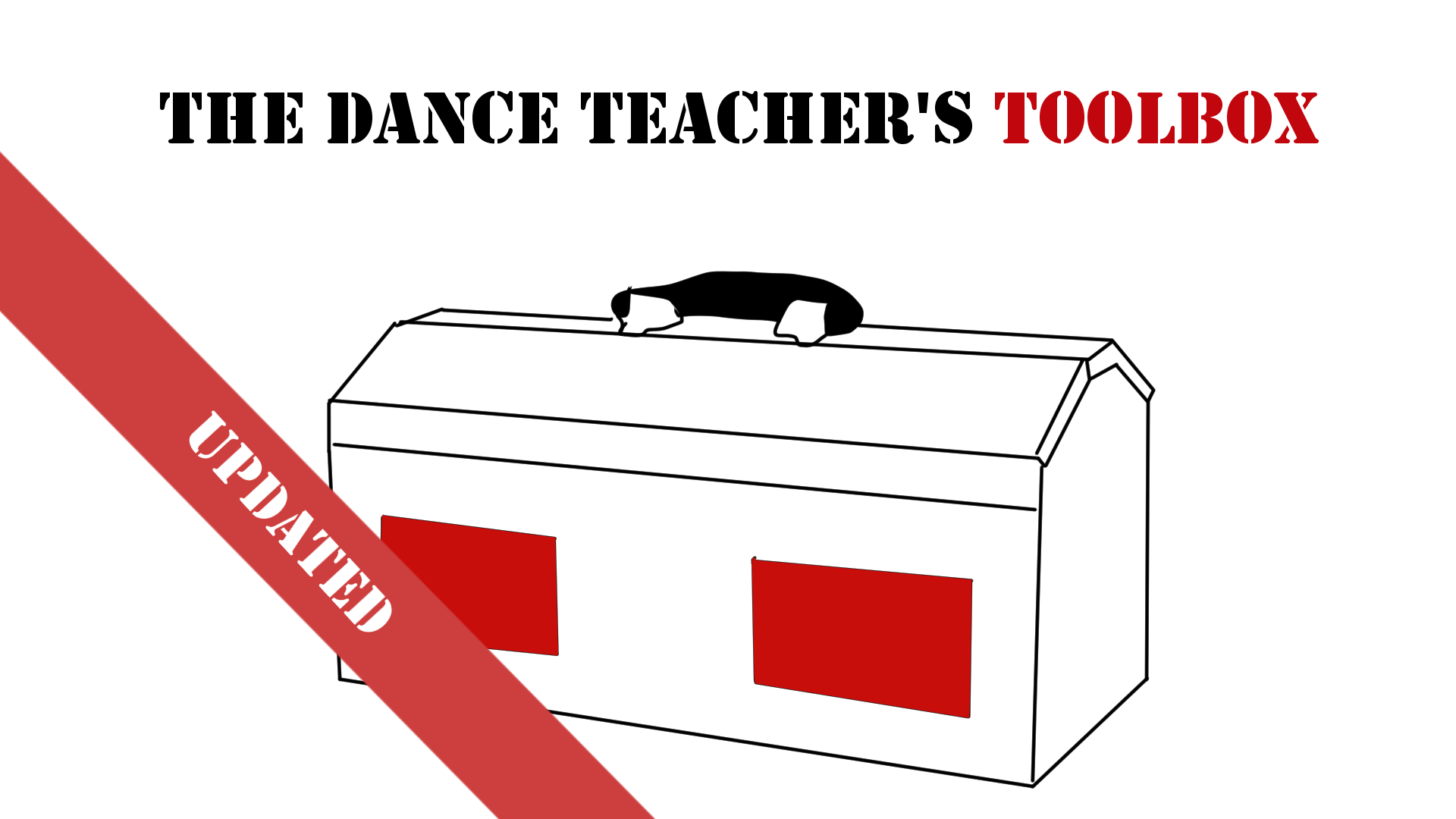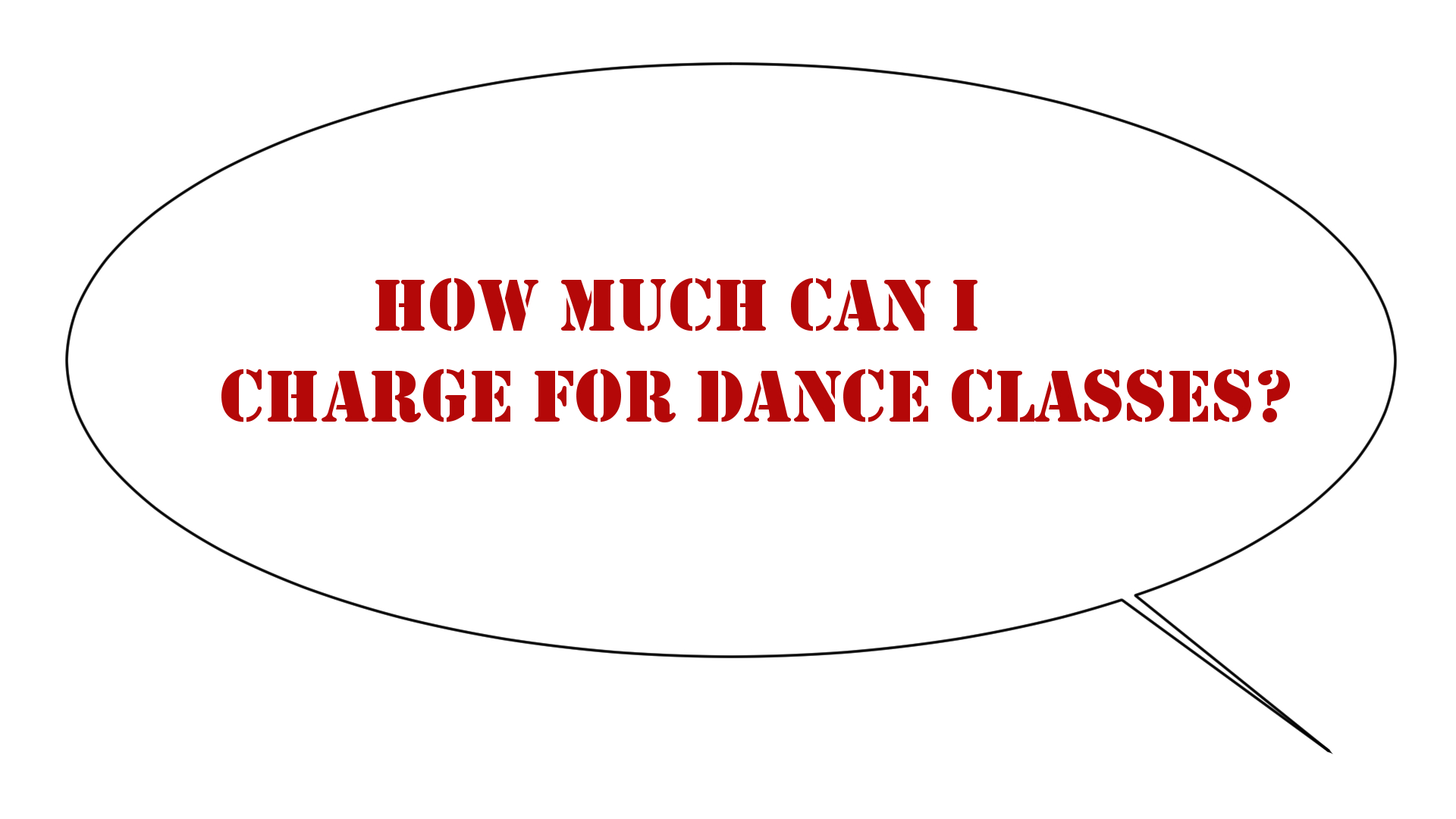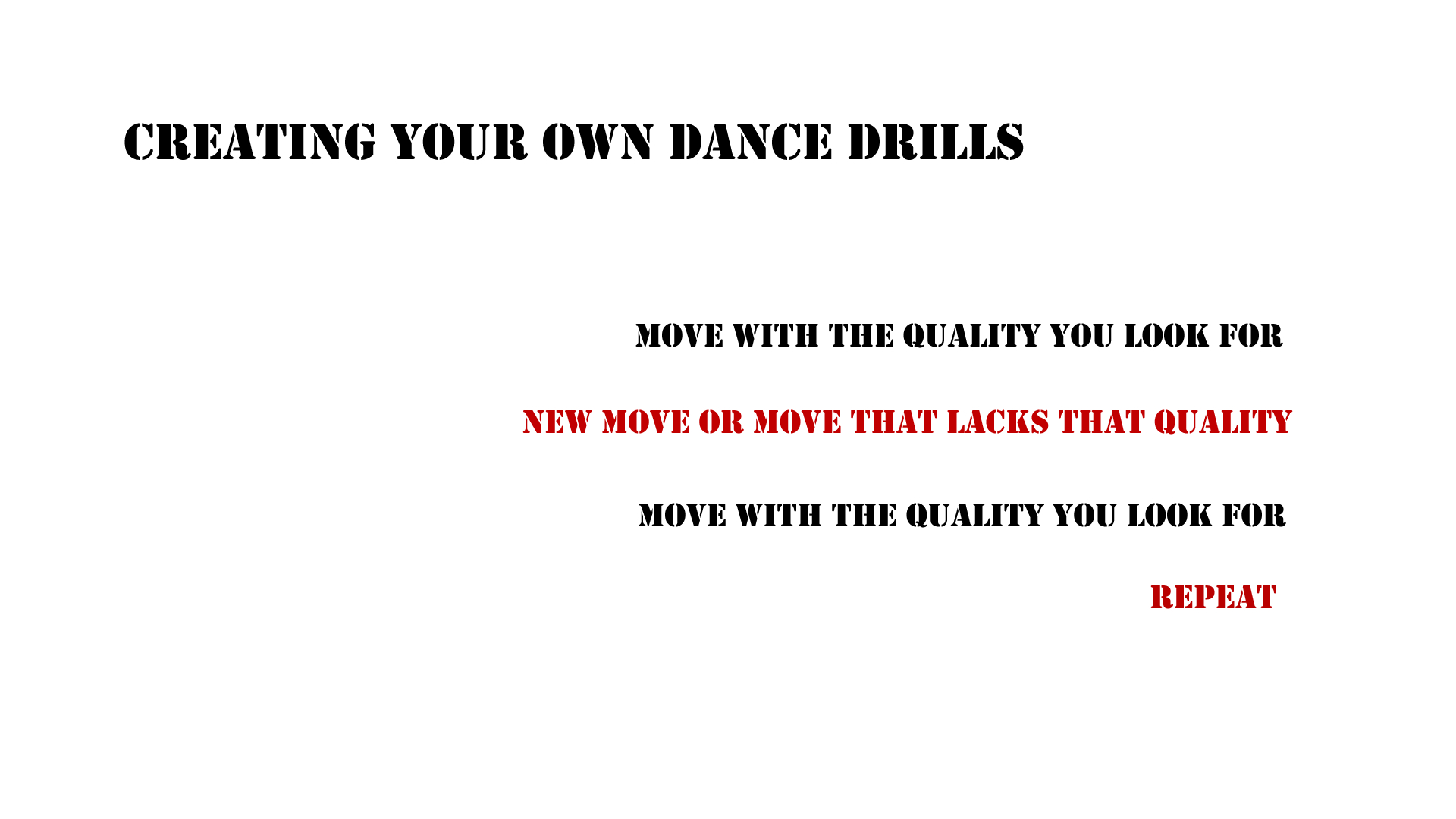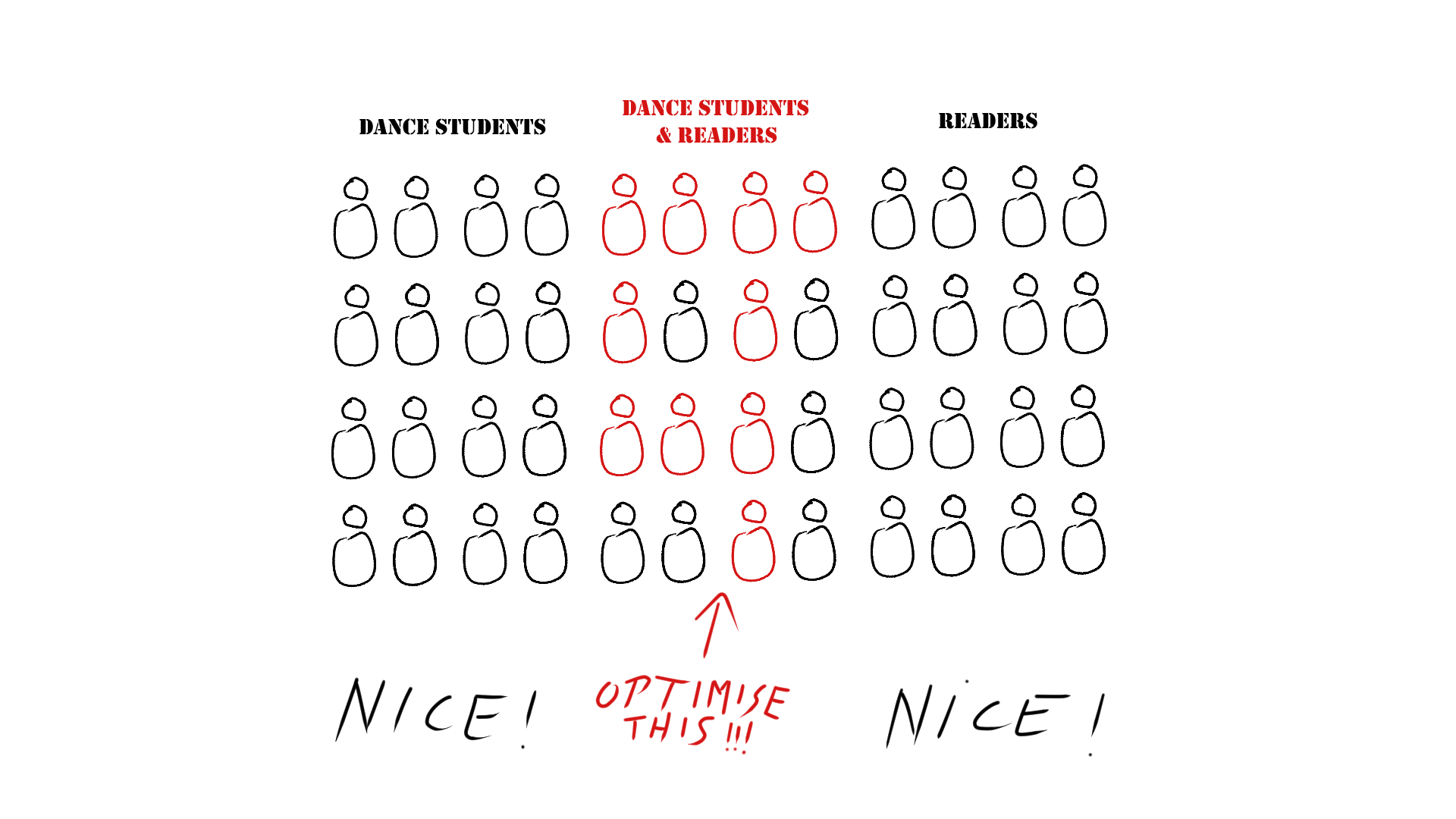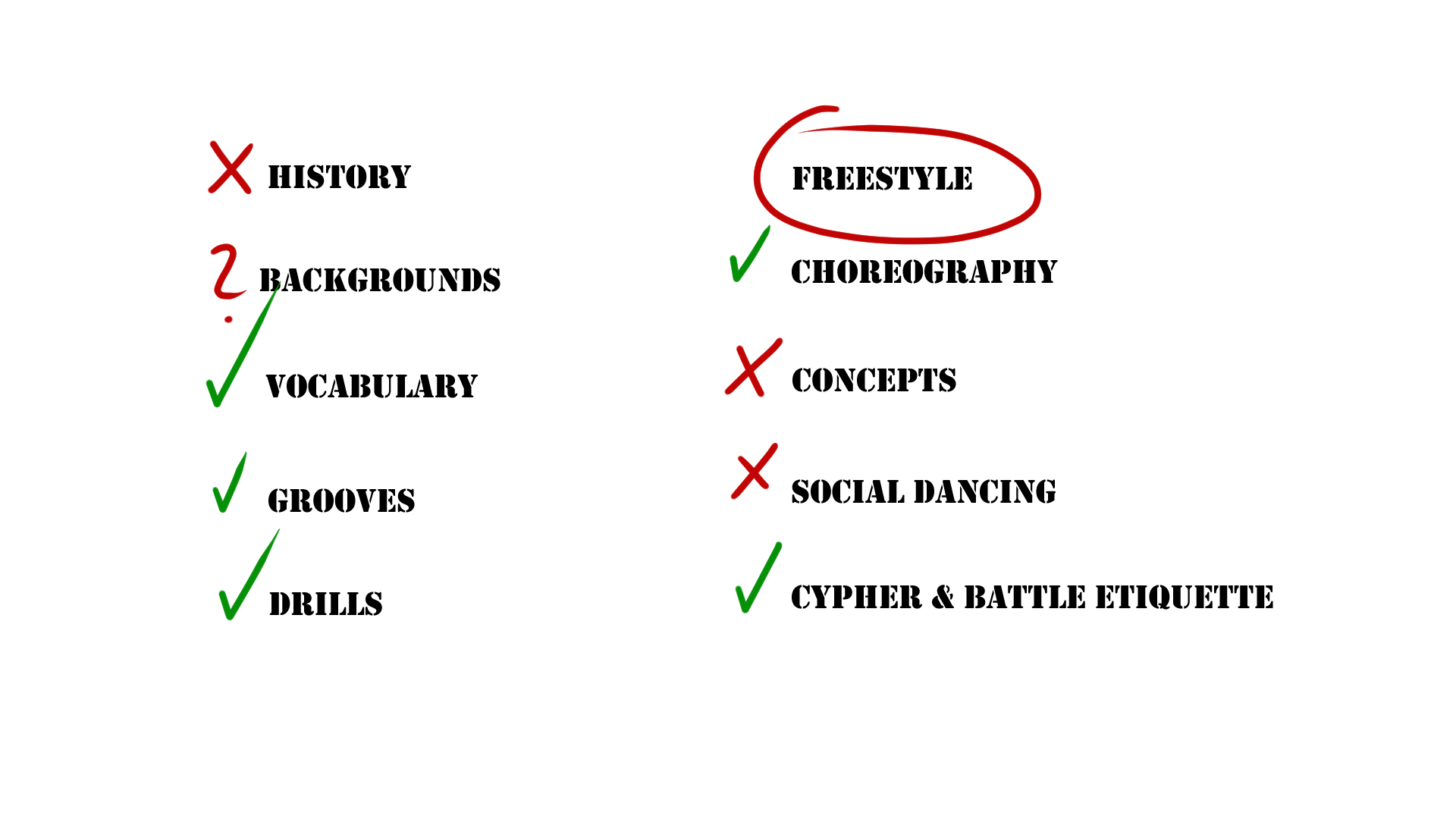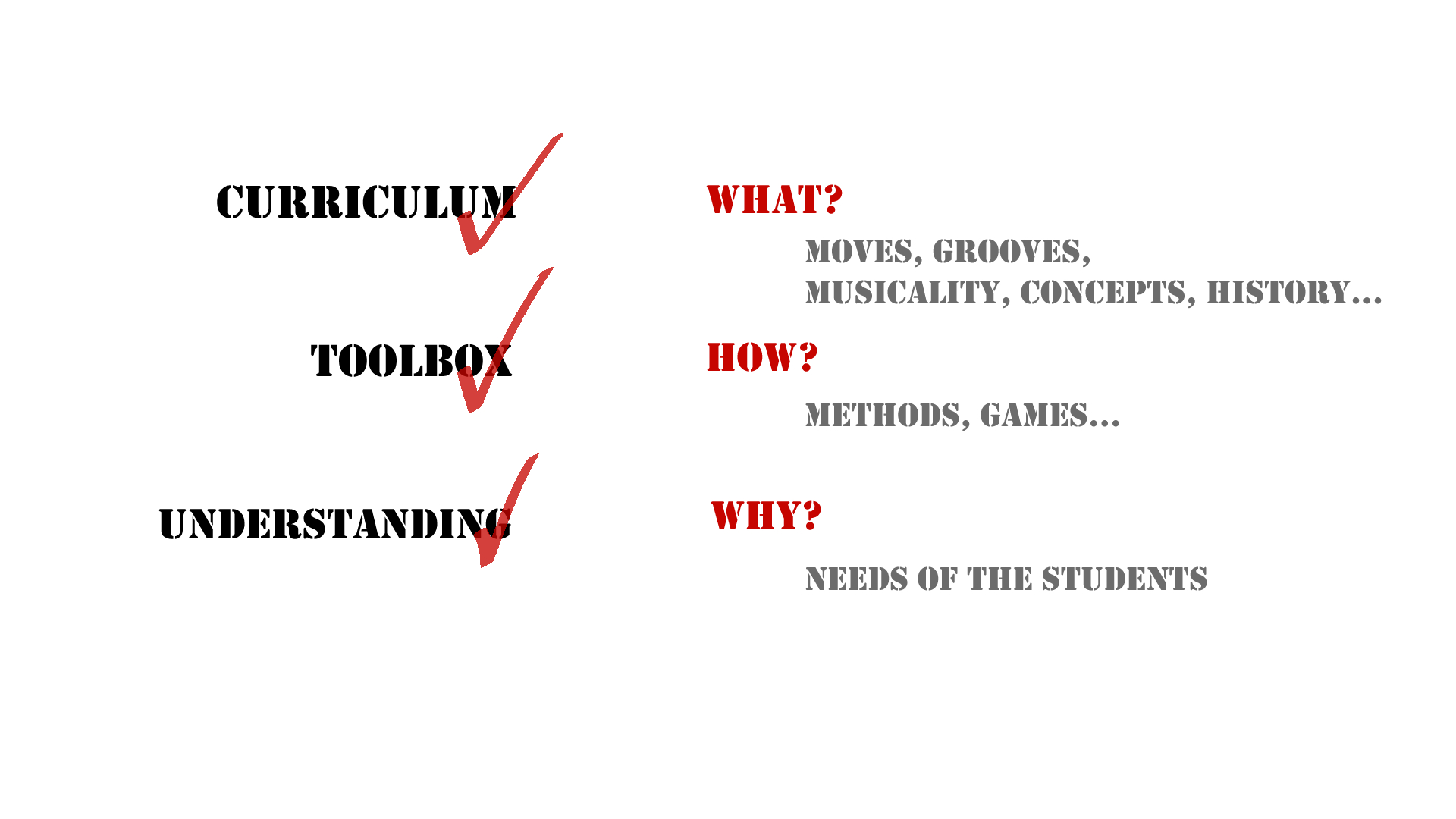Today I will cover the arsenal and tools for teaching dance that I use. There are, of course, more techniques out there that you can use to teach dance, but these are the ones that I think are the most important ones. They suffice in most regular classes. Later, I will cover more sophisticated techniques, but I want to dive into the other primary work fields as well, before going so much into the depths of teaching.
Show & Tell
Show & Tell is the basic principle of teaching other people anything related to dance. The technique is self-explanatory, as it is what it sounds like. The visual information of seeing and the added information about where to look for the details and intricacy of the material can be enough for people to understand what you want them to teach. This is your bread and butter. The go-to tool in teaching.
Feedback
Corrections can be done in many ways. You can address general problems or give individual feedback. You should do both like a lot of topics will be relevant for everyone, and some students might need a unique problem addressed. Don’t fall into the habit of not giving feedback. This is one of the essential differences between someone who teaches people and someone who entertains with dance. That would be a viable business approach as well, but this time we talk all about teaching.
Drills
Give your students exercises that make them practice new material in a structured way. Drills are like dance push-ups. They are needed to build muscle memory and elevate movement quality. You might have a lot of drills from your teachers, or you can create your own.
Games
Primarily if you teach a lot of kids, the idea of drilling something might not be the best approach to sell. Package the things your students need to work on in games. B-Boy Catch, Chinese Whispers with Dance Moves and similar ideas work well.
Peer Learning
Let your students teach and correct each other. Trying to explain something to other students leads to a better understanding of the material. This can be done when experienced students teach the new ones or when a group of the same level feedbacks each other.
Progressions
Teaching material in a sequence that makes sense is first and foremost a matter of planning your curriculum, but you can also use it to lead people to more complex moves. Go back to the basics of a movement if the students struggle with it and rebuild it from the foundation. In many cases, they did not yet master the previous motions you taught them.
Handouts and Teaching Material
Sadly, this one is not very widespread in the dance scene world. You can really support the progress of your interested students when you provide material that helps them to dive deeper into the matter. This can be additional background information, self-made video tutorials to remind them about the technique, links to tutorials from others, or documentaries. You can also provide videos of dancers that excel in certain areas that you covered in your classes. Make it easy for them to dig deep and go far with research if they are willing to.
Homework
Give them something to do or think about in between classes. You can’t force them to do it, but those who are willing to learn will do it and therefore progress faster.
Rhythm Exercises
Have some exercises ready that help them understand how music works. These can be taken from music theory, body percussion, or they can be created with simple dance steps.
Notes
Take notes. You, the teacher, not the students. They can do it as well, of course. Write down what you did in class, so you know what repeat next time. Write down if some students had issues with a specific topic and get back to it to help them out. Notes help to stay on track with everything, keep an overview of what you did in which in class and give you an excellent tool to evaluate the progress of the course.
The following point was not on my initial list, because I did not consider them as tools but Focus from the B-Boy Dojo made me reconsider, so I add them here now. Thx man.
History & Stories
The history of the dance you teach as well as stories and anecdotes from your own dance life or people you know are outstanding tools to keep your students motivated. When told in an inspiring way that the listener can relate to, it will make them wanna jump back to practice immediately.
The history of the dance is, of course, something you should teach as well and not only use it as a tool for teaching dance. But as it comes in with that double function, it works as the swiss-army-knife in your toolbox.
These are my most used tools for teaching dance, and of course, there are many more of them. Let me know which ones you use and if there are any basic ones that I missed.
If you want to see some of those in action, I teach a breaking class at Streetdance Center Salzburg, together with my colleague Gü.

